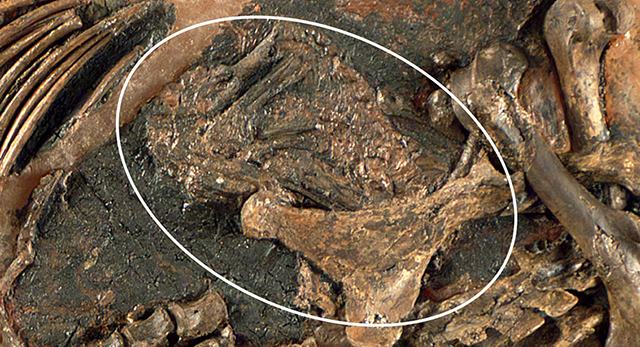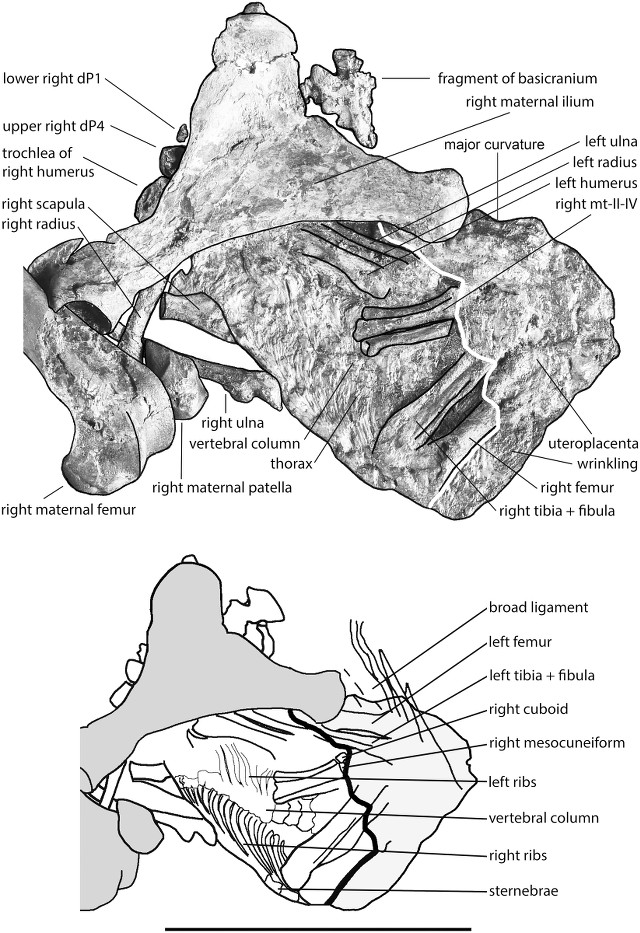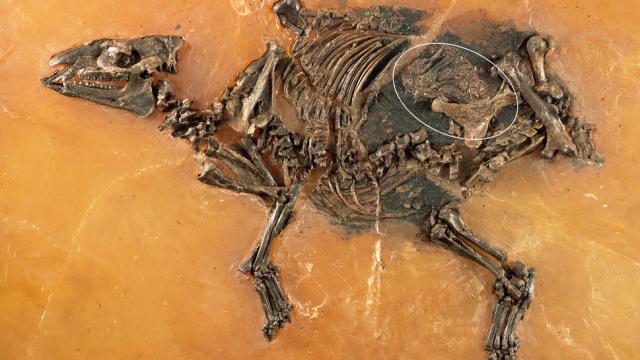Palaeontologists in Germany have identified the fossilised remains of a horse-like animal that dates back 48 million years. Remarkably, the fossil still contains its unborn foal and traces of soft tissue — leading scientists to call it the earliest and best-preserved specimen of its kind.
The Darmstadt region in Germany is renowned for its complete animal skeletons, many of which date back to the early Middle Eocene. This ancient era lasted for 8 million years, ending some 47 million years ago. During the Eocene, a number of modern mammals emerged, including equine creatures that would eventually branch off to become horses. Back in 2000, palaeontologists discovered the fossilised remains of one such animal, Eurohippus messelensi, a horse-like creature that stood no taller than a medium-sized dog.
A team of researchers from Senckenberg Research Institute Frankfurt and Naturhistorisches Museum Basel in Switzerland recently used scanning electron microscopy (SEM) and high-resolution micro x-rays to evaluate the bones and anatomy in great detail. The details of their work now appears in the open access science journal PLOS ONE.

The remarkably well-preserved foetus, measuring just 12.5cm in length, retained nearly all its bones — except for its skull, which appears to have been crushed. Because the fossil was in such great shape, the researchers were able to reconstruct the original appearance and position of the foetus. The foal was nearly full-term when it died, but it was still facing upside down, rather than having shifted into the birth position.

Line drawing of the exposed side of the foetus based on a reduced-contrast photo as background
The team of palaeontologists, led by SRI’s Jens L. Franzen, speculate that the mother may have died of unknown causes shortly before giving birth, though the cause of death was probably not birth-related.
Incredibly, the researchers also found evidence of preserved soft tissue in the form of petrified bacteria, including visible parts of the uterus, like the placenta and broad uterine ligament (which attaches the uterus to the lumbar vertebrae to support the foetus).
They reckon that it’s the earliest fossil record of the uterine system in a placental mammal. What’s more, after performing a comparative analysis with modern horses, the researchers learned that the equine reproductive system was already highly developed during the Paleocene, if not earlier.
Read the entire study at PLOS ONE: “Description of a Well Preserved Foetus of the European Eocene Equoid Eurohippus messelensis“.
